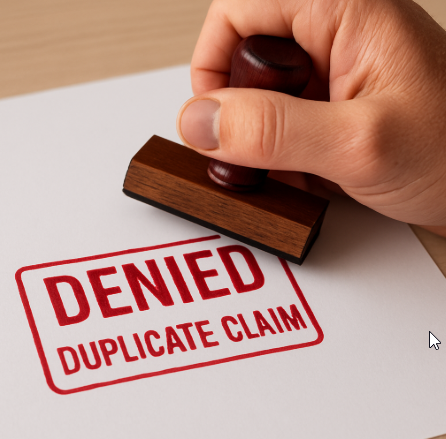Handling multiple visits for the same client on the same day is a common but challenging situation in home care billing. It can cause claim denials and delays if not managed properly, especially now that Electronic Visit Verification (EVV) is tightly integrated into the billing process.
This article breaks down why this issue matters, what complications can arise, and how providers can address them—especially as more states shift billing responsibilities to EVV aggregators.
Why This Matters Functionally
In everyday home care, it’s not unusual for a client to need care at multiple times throughout the day. A caregiver might visit in the morning, say from 7:00 to 9:00 a.m., to help the person get started, and then return in the evening, perhaps from 4:00 to 7:00 p.m., to help them wrap up their day.
These visits are necessary and appropriate. But billing both visits for the same day using the same service code can raise red flags.
How Payers View Duplicate Claims
From a payer’s point of view, when two claims show the same client ID and CPT code on the same date, they are often seen as duplicates. Even if the visits had different numbers of units, the similarity in identifiers can still trigger a denial.
Before EVV came into play, the go-to solution for this was the 76 modifier. This tells the payer that you’re intentionally billing a second visit using the same code.
For example:
-
Morning visit: T1019
-
Evening visit: T1019 with a 76 modifier
Advanced home care billing software like Ankota’s can detect this pattern and apply the modifier automatically.
What EVV Aggregators Are Doing
With EVV systems now responsible not just for validating visits but also for sending claims to payers, you might expect them to handle these nuances correctly. After all, EVV includes start and end times for each visit.
But not all aggregators do this well.
Georgia and Netsmart (Tellus)
In Georgia, providers submit visits to Netsmart, formerly known as Tellus. Netsmart processes the visit data and forwards it to the state Medicaid system, GAMIS. This setup could handle multiple visits intelligently, but in practice, providers still need to take extra steps—like adding modifiers—to avoid denials.
Missouri and Sandata
Missouri requires all EVV data to flow through Sandata before reaching the Medicaid claims system, EMOMED. Direct submission is no longer an option. This centralization means Sandata must correctly manage situations like same-day duplicate visits, but errors still happen.
New Hampshire and AuthentiCare
In New Hampshire, providers submit to Authenticare, which passes the claims along to Medicaid or to managed care organizations like New Hampshire Healthy Families. Instead of using the proven 76 modifier, Authenticare introduced a workaround.
They ask providers to use modifiers based on the time of day. The 24-hour day is split into four blocks:
-
Midnight to 6:00 a.m.
-
6:00 a.m. to Noon
-
Noon to 6:00 p.m.
-
6:00 p.m. to Midnight
The logic is that it’s unlikely for a client to need two visits in the same block. But this system doesn’t reflect real life. Take a case where a caregiver helps from 6:15 to 7:30 a.m., and again at 11:30 a.m. The visits span two blocks, but still may be flagged as duplicates, especially if they’re close together.
Accrued Minutes and Billing Practices in Missouri
Missouri has another quirk. Instead of rounding to the nearest 15 minutes, they only allow billing for completed 15-minute units. If a caregiver works 59 minutes, only 45 minutes can be billed. The leftover 14 minutes can be saved and applied to future visits.
Here’s an example:
-
Day 1: 59-minute visit equals 3 units billed, with 14 minutes banked
-
Day 2: 62-minute visit equals 4 units billed—3 from the visit and 1 from the previous day’s leftover time
The best practice is to bill the extra unit on the date the visit occurred. If you wait until the end of the month or apply those minutes to a day with no actual visit, you risk conflicts. For example, if the client was hospitalized that day, the claim could be denied.
Ankota’s software is designed to handle this automatically, helping providers stay compliant while maximizing reimbursement.
What Providers Can Do
If your EVV or billing software doesn’t handle these cases well, you could face rejections, payment delays, or manual workarounds. Whether it’s about applying the right modifier, interpreting EVV rules correctly, or handling special cases like accrued units, these are manageable challenges with the right systems in place.
Let’s Talk
If you want to explore how to better manage same-day visits or need help with other complex billing scenarios, reach out to us at Ankota. We’re here to help.
Ankota's mission is to enable the Heroes who keep older and disabled people living at home to focus on care because we take care of the tech. If you need software for home care, EVV, I/DD Services, Self-Direction FMS, Adult Day Care centers, or Caregiver Recruiting, please Contact Ankota.




Your Comments :